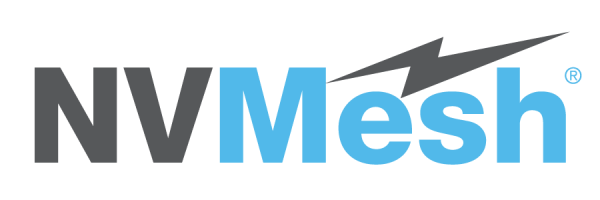Connect to Azure using its CLI.
- Most often this can be done from a local computer shell.
- Use
az loginto begin the connection. - Follow the shell steps to complete the login process.
Verify that the expected Azure subscriptions are accessible.
- Use
az account list --refreshto see all available subscriptions, for example as follows.
- Use
az account set -s <id>to choose a specific subscription.
Run az account show.
- Record the values of
tenantIdandidfor future use.
Create a service principal, which is needed for each cluster using az ad sp create-for-rbac --role Contributor --name <service_principal_name>.
- Make a note of the values for
appIdandpasswordfrom the output for future use. - Note: The error, “When using this permission, the backing application of the service principal being created must in the local tenant” seems like a transient bug. Rerun the command until it works.
Grant permissions to the created Server Principal using the appId recorded above.
az role assignment create --role "User Access Administrator" --assignee-object-id $(az ad sp show --id <service-principal-name> -o tsv --query objectId)az ad app permission add --id <appId> --api 00000002-0000-0000-c000-000000000000 --api-permissions 824c81eb-e3f8-4ee6-8f6d-de7f50d565b7=Roleaz ad app permission grant --id <appId> --api 00000002-0000-0000-c000-000000000000
Choose one of the following YAMLs, TCP YAML or Infiniband YAML, and save it in the same folder as openshift-installer binary and name it install-config.yaml.
Example YAML for TCP-based environments
apiVersion: v1
baseDomain: <your_base_dns>
compute:
- architecture: amd64
hyperthreading: Enabled
name: worker
platform:
azure:
type: Standard_L32s_v2
osDisk:
diskSizeGB: 512
zones:
- "1"
replicas: 3
controlPlane:
architecture: amd64
hyperthreading: Enabled
name: master
platform: {}
replicas: 3
metadata:
creationTimestamp: null
name: <your_desired_cluster_name>
networking:
clusterNetwork:
- cidr: 10.128.0.0/14
hostPrefix: 23
machineNetwork:
- cidr: 10.0.0.0/16
networkType: OpenShiftSDN
serviceNetwork:
- 172.30.0.0/16
platform:
azure:
baseDomainResourceGroupName: nvmeshrg
cloudName: AzurePublicCloud
outboundType: Loadbalancer
region: westeurope
publish: External
sshKey: <your_public_ssh_key(not_path)>
pullSecret: '<your_pull_secret(not_path)>'Example YAML for Infiniband-based environments
apiVersion: v1
baseDomain: <your_base_dns>
compute:
- architecture: amd64
hyperthreading: Enabled
name: worker
platform:
azure:
type: Standard_HB120rs_v3
osDisk:
diskSizeGB: 512
zones:
- "1"
replicas: 0
controlPlane:
architecture: amd64
hyperthreading: Enabled
name: master
platform: {}
replicas: 3
metadata:
creationTimestamp: null
name: <your_desired_cluster_name>
networking:
clusterNetwork:
- cidr: 10.128.0.0/14
hostPrefix: 23
machineNetwork:
- cidr: 10.0.0.0/16
networkType: OpenShiftSDN
serviceNetwork:
- 172.30.0.0/16
platform:
azure:
baseDomainResourceGroupName: nvmeshrg
cloudName: AzurePublicCloud
outboundType: Loadbalancer
region: westeurope
publish: External
sshKey: <your_public_ssh_key(not_path)>
pullSecret: '<your_pull_secret(not_path)>'Edit the YAML file filling in the following.
- your_base_dns – the public base DNS domain as configured in azure, for example excelero.org.
- Set the number of workers or NVMesh nodes by changing 3 to any number bigger than 3.
- your_desired_cluster_name.
- your_public_ssh_key (not_path) – copy and paste a public key that will be installed on all openshift nodes.
- your_pull_secret (not_path) – keep the quotes and replace the variable with copy-paste of the pull secret you download at the prerequisite stage.
- region – can be any region from the following list that has enough limits as described in the prerequisite.
- australiacentral (Australia Central)
- australiaeast (Australia East)
- australiasoutheast (Australia South East)
- brazilsouth (Brazil South)
- canadacentral (Canada Central)
- canadaeast (Canada East)
- centralindia (Central India)
- centralus (Central US)
- eastasia (East Asia)
- eastus (East US)
- eastus2 (East US 2)
- francecentral (France Central)
- germanywestcentral (Germany West Central)
- japaneast (Japan East)
- japanwest (Japan West)
- koreacentral (Korea Central)
- koreasouth (Korea South)
- northcentralus (North Central US)
- northeurope (North Europe)
- norwayeast (Norway East)
- southafricanorth (South Africa North)
- southcentralus (South Central US)
- southeastasia (Southeast Asia)
- southindia (South India)
- switzerlandnorth (Switzerland North)
- uaenorth (UAE North)
- uksouth (UK South)
- ukwest (UK West)
- westcentralus (West Central US)
- westeurope (West Europe)
- westindia (West India)
- westus (West US)
- westus2 (West US 2)
Run rm -f ~/.azure/osServicePrincipal.json to delete any previous service principal configuration on the local machine.
Run ./openshift-install create cluster --dir=./ --log-level=debug. The process should take around 50 minutes and will provide an interactive shell.
- Platform → choose azure
- subscription id → paste the
idrecorded above - tenant id → paste the
tenantIdrecorded above - service principal client id → paste
appIdrecorded above - service principal client secret → paste
passwordrecorded above
Accelerate worker machine NICs once the cluster is up.
- Go to Microsoft Azure – Resource Groups
- Click the resource group with the cluster name defined
- Search for Network Interface resources named: -xxxx-worker-region-xxxxx-nic.
- Click on the NIC and then click Enabled accelerated networking at the top.
If there are errors, run ./openshift-install destroy cluster and revert to the create cluster step.




Post your comment on this topic.